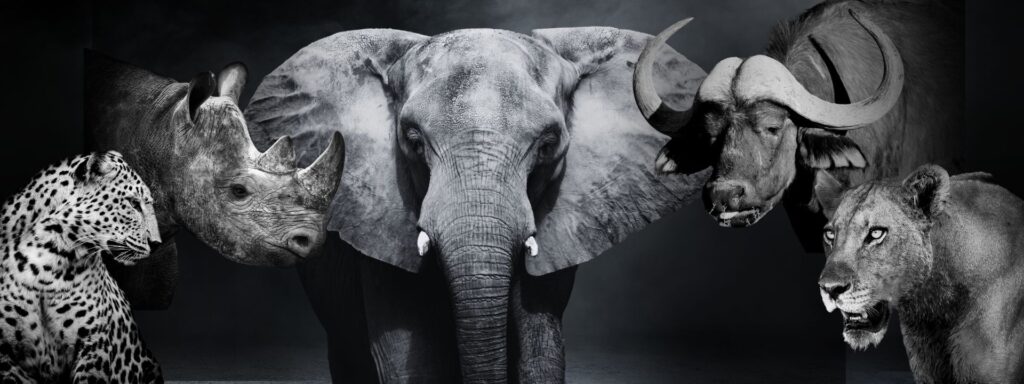
Introduction to Kruger National Park
Welcome to Kruger National Park, Africa’s largest and South Africa’s oldest wildlife reserve. Private Game Reserves such as Sabi Sands, Timbavati, Manyeleti, Balule, Kapama, Thornybush and others form what is known as the Greater Kruger National Park. This wild expanse spans over 2 million hectares and hosts 150 mammals, 500 plus birds and about a 100 reptile species, promising an unforgettable safari experience!
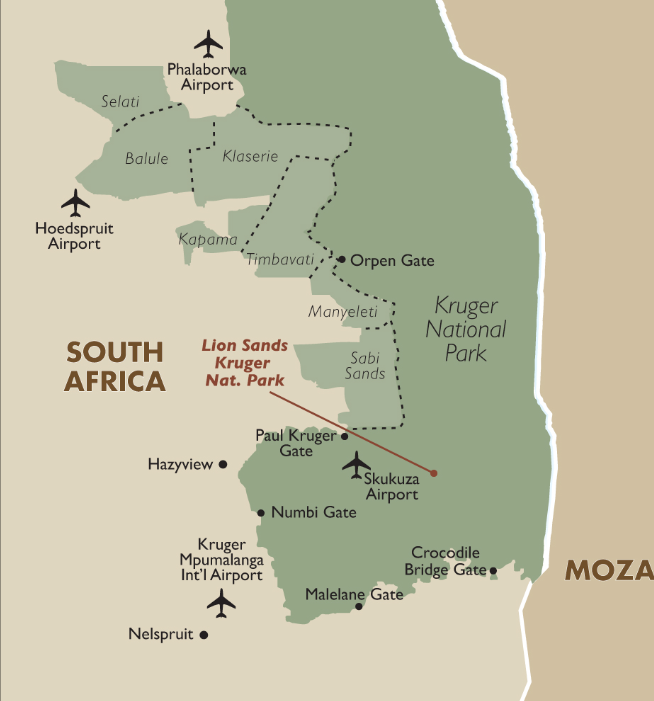
Furthermore, Kruger is part of a Peace Park along with Gonarezhou National Park in Zimbabwe and Limpopo National Park in Mozambique. This initiative removed fences between South Africa, Mozambique, and Zimbabwe, creating a vast protected wilderness where wildlife can roam freely. This move not only safeguarded animal migration but also boosted tourism, allowing thousands of wildlife enthusiasts to explore some of Africa’s most magnificent wild places!
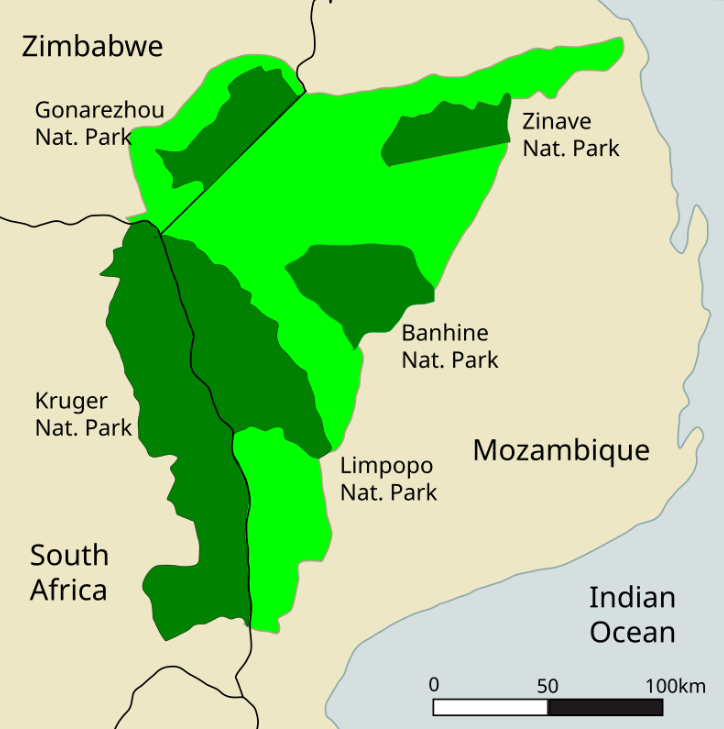
In this blog, we celebrate Africa’s iconic Big Five! In Kruger National Park, you will find an estimated 1,500 lions, 1,200 elephants, 1,000 leopards, 40,000 Cape buffalos, and 5,000 rhinos (both black and white). These magnificent creatures truly make Kruger a wildlife wonderland! Incredibly, spotting all the Big Five species in a single day is possible here!
Lions
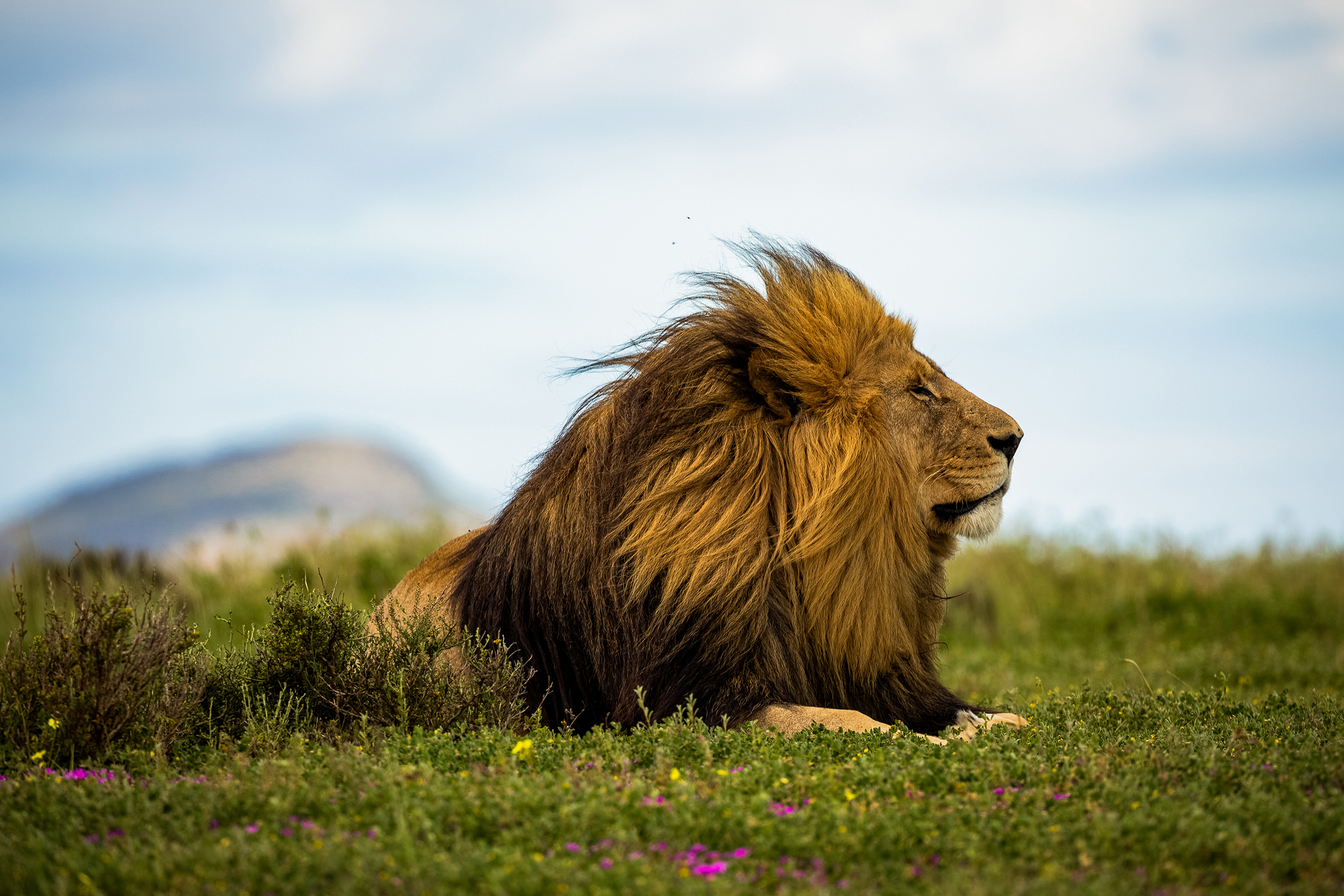
Male lions band together in coalitions to take over a group of females and start their own family, known as a pride. Typically, a pride consists of two to four male lions, around a dozen females, and their playful cubs. This social structure is fascinating to observe and a key part of lion life in Kruger!
Over the years, Kruger has been home to several large prides of lions, with some family groups boasting up to 40 members! Even more fascinating, the Timbavati Reserve within Kruger has hosted rare white lions. These unique lions, a result of a genetic mutation, have striking white coats that make survival tougher as they struggle to blend into their natural surroundings. Lions are ambush predators, relying on camouflage to hunt effectively.
Want to know more about these rare big cats? Click here to watch this short video!
Being a true alpha male in the wild is no easy feat. Dominant lions must constantly fight to defend their pride and their progeny. Sadly, this also involves eliminating the offspring of rival males to expand their territory, secure mating rights, and pass on their genes. A historic film, “Brothers in Blood,” captured over 16 years at Sabi Sand Game Reserve, showcases what it truly means to be an alpha male lion in the wild. Click here to watch this incredible documentary! Disclaimer: Some scenes are extremely hard-hitting and heartbreaking.
Elephants
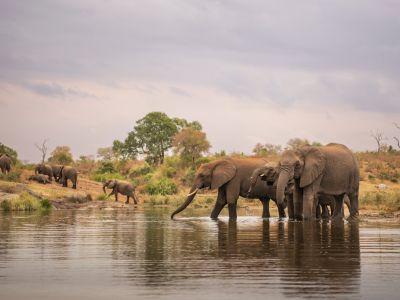
Elephants are social creatures that live in herds, always on the move in search of food and water. The matriarch, the oldest female, leads the way, passing down vital knowledge of the best routes from one generation to the next. It is her job to guide the herd and keep them safe and well-fed as they journey across the land.
Thanks to sustained conservation efforts, the elephant population at Kruger has more than doubled in recent years! You can now see large herds roaming freely and get a close look at their fascinating behaviour. Plus, you might even spot some impressive bulls with massive tusks!
One of the most enchanting sights in Kruger is watching baby elephants playfully interact with each other and their mothers. These young calves, protected and nurtured by the entire herd, are a testament to the strong familial bonds within elephant communities. Observing their playful antics and the gentle guidance of the matriarch is a heartwarming experience that highlights the social complexity and intelligence of these majestic creatures.
Catch a glimpse of this rare albino elephant calf playing in the water. Click here!
Leopards
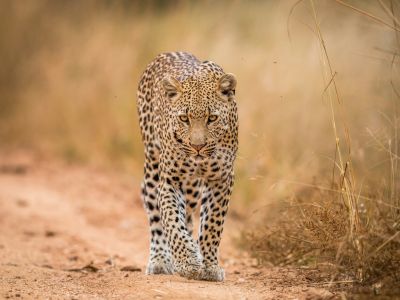
Leopards are the elusive stars of Kruger National Park, known for their incredible stealth and solitary nature. With their distinctive rosette-patterned coats, these magnificent cats blend seamlessly into the bush, making sightings a thrilling and rare experience. Often seen resting in trees during the day, leopards descend at dusk to hunt, showcasing their agility and strength.
One of the most captivating aspects of leopards in Kruger is their adaptability. These big cats thrive in various habitats, from rocky outcrops to dense riverine forests. Their ability to navigate and hunt in diverse environments makes each encounter unique. Whether you spot one lounging on a tree branch or silently stalking prey, the leopard’s grace and prowess are mesmerising.
Watch this incredible leopard hunt! Click here!
Leopards are also known for their secretive nature, often dragging their kills up into trees to keep them safe from scavengers. This behaviour not only highlights their strength but also their strategic thinking. Watching a leopard hoist its prey up a tree is a powerful reminder of the raw, untamed beauty of the wild and a testament to the intricate balance of nature within Kruger National Park.
Cape buffaloes
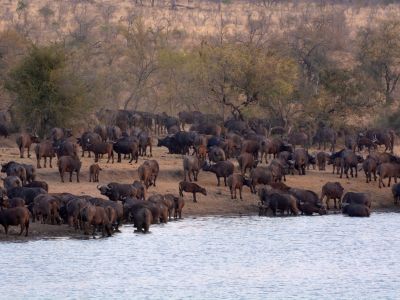
Cape buffaloes are a formidable presence in Kruger National Park. These robust animals, with their distinctive curved horns and sturdy build, are known for their unpredictable nature and strong herd instincts. Observing a herd of Cape buffalo moving through the park is a sight to behold, as they navigate the landscape with a sense of purpose and unity.
One of the most fascinating aspects of Cape buffaloes is their social structure. Herds can consist of hundreds of individuals, offering protection and strength in numbers. The bonds within the herd are strong, with individuals often seen grooming each other and standing shoulder to shoulder against threats. This cooperative behaviour makes them a powerful force in the wild, capable of defending against predators like lions.
Cape buffaloes are also renowned for their resilience and adaptability. They thrive in various environments within Kruger, from open savannas to dense woodlands. Their ability to find water and grazing grounds, even in challenging conditions, showcases their remarkable survival skills. Encountering these impressive animals in Kruger National Park is a testament to the enduring spirit and strength of Africa’s wildlife.
If you ever wondered what clash of horns looks like, watch this video!
Rhinos
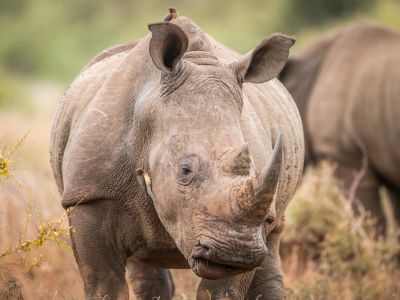
Kruger National Park is a vital sanctuary for both white and black rhinos. The park’s vast landscapes and dedicated conservation efforts have made it one of the best places to witness these magnificent creatures. The white rhino, known for its wide mouth and grazing habits, can often be seen in open savannas, leisurely munching on grasses.
In contrast, the black rhino is more elusive and prefers the dense bush, where it uses its pointed upper lip to browse on leaves and branches. Spotting a black rhino is a rare and thrilling experience, as their shy nature and lower numbers make them harder to find. Kruger’s diverse habitats provide the perfect environment for both species, showcasing their different adaptations and behaviours.
Kruger’s commitment to rhino conservation has been unwavering, with anti-poaching measures and community involvement playing crucial roles. Despite the challenges, the park continues to protect and nurture these ancient giants. Visitors to Kruger have the unique opportunity to learn about the efforts to save these incredible animals and witness the resilience of the rhino population firsthand.
Watch this short clip explaining the state of rhinos in Africa. Click here!
Conclusion
Experiencing the Big Five in Kruger National Park is nothing short of extraordinary. From the powerful presence of lions and the majesty of elephants to the elusive beauty of leopards, the formidable cape buffalo, and the ancient grace of rhinos, each encounter leaves a lasting impression. These magnificent creatures embody the spirit of Africa and highlight the incredible biodiversity that Kruger offers.
While spotting these iconic animals is a thrilling aspect of any safari, Kruger National Park is much more than just its famous residents. The park’s diverse landscapes, from lush forests to vast savannas, support a myriad of other wildlife species and stunning flora. Apart from the Big 5, visitors often seek out the sleek cheetahs, hefty hippos, and elusive wild dogs. Meanwhile, the park teems with more familiar faces like wildebeest, graceful giraffes, striking zebras, and various antelope and deer species. Every safari in Kruger is a unique adventure, offering surprises and moments of wonder that go beyond the Big Five.
As we conclude our journey through the Big Five of Kruger, we are reminded of the importance of conservation and the need to protect these majestic animals and their habitats. The efforts to preserve Kruger and its wildlife ensure that future generations can continue to experience the awe and wonder of this incredible natural haven. So, whether you are a seasoned safari-goer or a first-time visitor, Kruger National Park promises an unforgettable adventure into the heart of the wild.